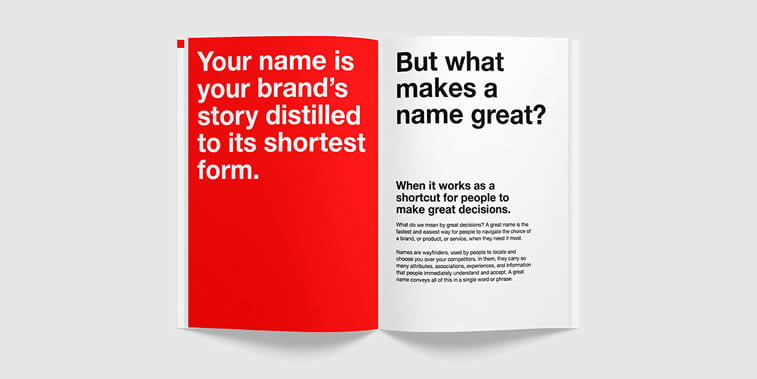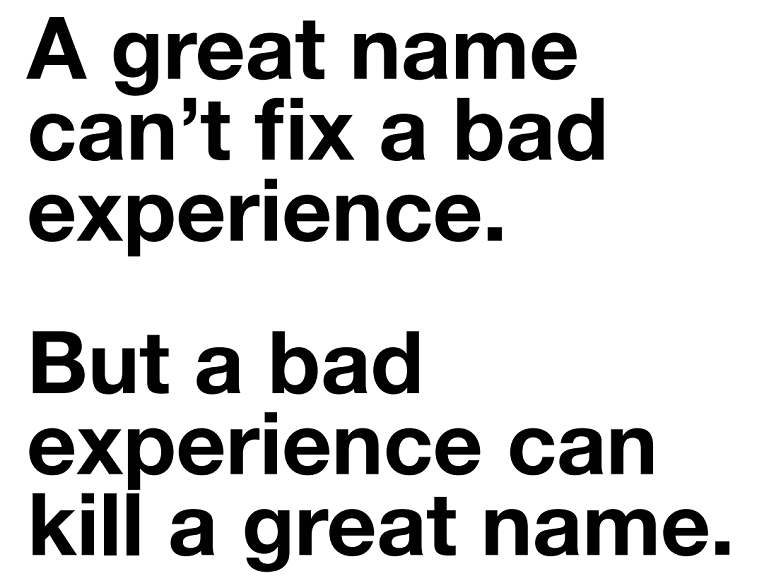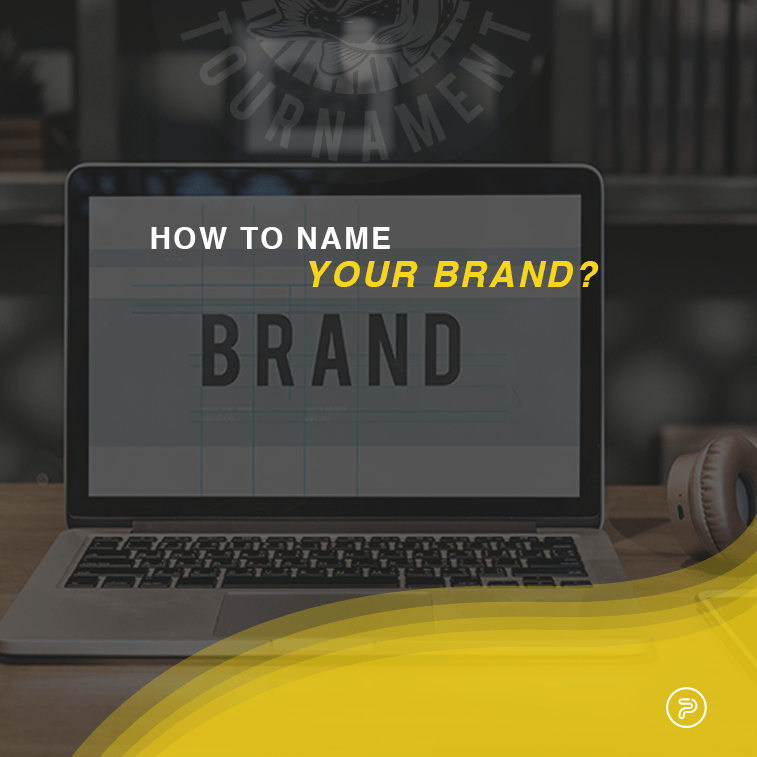Are you starting a new business venture? Or are you simply renaming your shop? In this post, we are discussing the topic of naming your brand. And, most importantly, how to do it correctly.
First of all, naming heavily depends on your field of work. If your field is, for example, science, more serious approach is the path to take. However, if you are a candy manufacturer, it is totally okay to have a fun name. But jokey names may not be appropriate for corporations. They may also turn away your potential partners and clients and you do want to leave a good impression, don’t you?
Your brand name is the first thing people will get in contact with, so make it appealing.
If you do not know where to start, we are here to help with a list of simple steps to follow in order to win the naming game for your business.
Brainstorming Sessions
You are probably tired of hearing this word everywhere, but brainstorming is the key when it comes to the naming process. It is true that these sessions can be beneficial to get you to start thinking. You decide in which direction you would like the naming process to go. Gather people who showed creativity so far and whom you trust. More people can uncover names you would have never thought of yourself.

Here are some ideas and examples to think about before writing down the first ideas for your new brand name.
1. Founder’s name
The good, old-fashioned way is to simply use your surname. You will probably not really stand out in the market, but it is a foolproof way that your company will look serious and sound professional. Then again, if you have an atypical last name, people may remember you more easily.
There are instances when using your name is a great marketing strategy, too. For example, law firms are usually named after the lawyers who founded them.
Anyway, you do not have to use your full name if you wish not to. Here are some examples of how you can use it in a different way.
You probably know about the fashion brand C&A. And you maybe wondered what do those letters mean. Well, they simply mean Clemens and August, first names of brothers Brenninkmeijer who founded the company.
McDonald’s is an international phenomenon and everybody heard of it. But have you ever thought about why is it called that? Is it Ronald McDonald’s restaurant? Wrong. Brothers Richard and Maurice McDonald, the founders, distinguished their chain of fast food restaurants from the others by calling it their own. Literally.
However, tread carefully around possessive nouns. These better work in the hospitality sector.
Creating a new name by mixing your surname with another word is also an option. Take inspiration from Toblerone chocolates. Theodor Tobler added to his surname an Italian word “torrone” which is a type of nougat.
Try translations. Audi has an interesting origin story. It is actually a Latin translation of the founder’s surname. Horch means “listen” in German, while “audi” means the same in Latin.
2. Combine words
Mix and match. Combine two, three or more words into one and create a new word. Many popular brands tried this approach and succeeded. If you decide to try your luck in creating a brand, new word, use the words that have meaning in relation to your business.
Just take a look at Instagram and YouTube. Instagram is actually a portmanteau of words “instant camera” and “telegram”. Meanwhile, YouTube plays on the idea of personalization. “You” means that you can add your own preferences, while “tube” is an old word for television.
3. Invent it
Your line of work can either limit your creativity or you will have the freedom to invent words from scratch. If you decide to try and invent a new word for your company’s name, make sure it can be easily pronounced. Try to make it as simple as possible so that there is no room for wrong spellings.
According to the CEO and founder Daniel Ek, Spotify is actually a form of a misheard word which the other Spotify’s founder, Martin Lorentzon, shouted during one brainstorming session. Later they decided that it is the etymology of words “spot” and “identify”.
Max Keith, head of Coca-Cola Germany, asked people to think about what should the new orange drink be called. “Use your imagination”, he said, in German of course, and the German word for “imagination” is “Fantasie”. One of the team members, Joe Knipp, exclaimed “Fanta!” and that is what they chose.

4. Shorten it
Do you already have a name, but it is too long? No problem. Just make it shorter. For example, VEVO is actually an abbreviation of “video evolution”.
If you have a lot of words in the name, you can also make a simple acronym. Or get creative and make up a backronym for your already short name. Did you know that Yahoo! is a backronym for “Yet Another Hierarchically Organized Oracle”?
5. Borrow it
This is probably the easiest way out. Use a name that already exists. But, use it with purpose. Do not pick out a random one just because you like the sound of it.
Jeff Bezos, founder and CEO of Amazon, found inspiration in the longest river in the world. As a symbol of a great book selection that his company offered before all the other products found their way there, Bezos decided to call his company Amazon.
Pandora jewelry took a different route. They found the inspiration in Greek mythology. Pandora was a human created by gods and her name means “all gifted”. This goes in line with the brand since Pandora jewelry is often bought as a present for special occasions.
Test the Chosen Name
Test how your chosen name is sounding to others. You can arrange an experiment and make a focus group of people who have never been in touch with your company and do not know what you are actually doing. This way you can make necessary tweaks in case there are any misunderstandings and wrong pronunciations of your company’s name.
MailChimp has this issue almost on a daily basis. However, they decided to use it to their advantage and created a fun campaign called “Did You Mean”. Here is one hilarious video from the campaign:
The chosen name also has to be available for use. So, do not get emotionally attached to one name. Keep your options open. You do not want to end up heartbroken if it happens that the one name you cheered on is already taken. Check if the name is not already trademarked and if you can get the domain for it. Nowadays internet presence is almost mandatory. Do make sure that the domain is available, even though you may not immediately launch your website.
Also, try to have a name that can survive the expanding of your current offer. Think about the future of your business and try to settle for a name that is not related to only one specific product or service.

Resources
Are you pressed for time? In some cases, you may urgently need a name a lot sooner than you thought. An important presentation for the investors is coming up or funding that you cannot miss is right around the corner? You can quickly come up with a good name with the helping hand of this GV guide “How to Name a Company in 8 Hours”. But do make sure to at least have more time than that.
Are you ready to start the naming process but you are feeling a bit uninspired? No problem. Check out this motivational presentation “In a Word” from Interbrand. It has little nuggets of wisdom such as the one above.
Stuck in a rut? No worries. Check out this great website called Onym with (literally) tons of examples of great names, helpful tools such as dictionaries, thesauruses, glossaries, and websites where you can check trademarks and the availability of domain names.
Conclusion
The brand naming process can take a while. With patience and time, you will manage to come up with a perfect name for your business. Define what you wish for your name to convey and what association you want people to have when they see it.
Another way to brainstorm ideas is to simply ask others. Interview your coworkers and make a list of adjectives that they mostly connect to your business. Then try the elimination process until you end up with the only one which explains your product or service the best. Now, why not make a name out of it?
Last but not least, whatever you do, do not use the name generators. Or at least do not completely rely on them, but use them only as a source of inspiration and a way to get out of a creative rut.
What next? Well, now you are fully equipped to start working on your first name drafts. We wish you a lot of luck on this quest and remember to take breaks and that the one truly great name will appear eventually!
Do you have a fun name origin story of your company? Or a useful resource for this mighty task? Comment below or tune into the discussion with others on our Facebook page.





